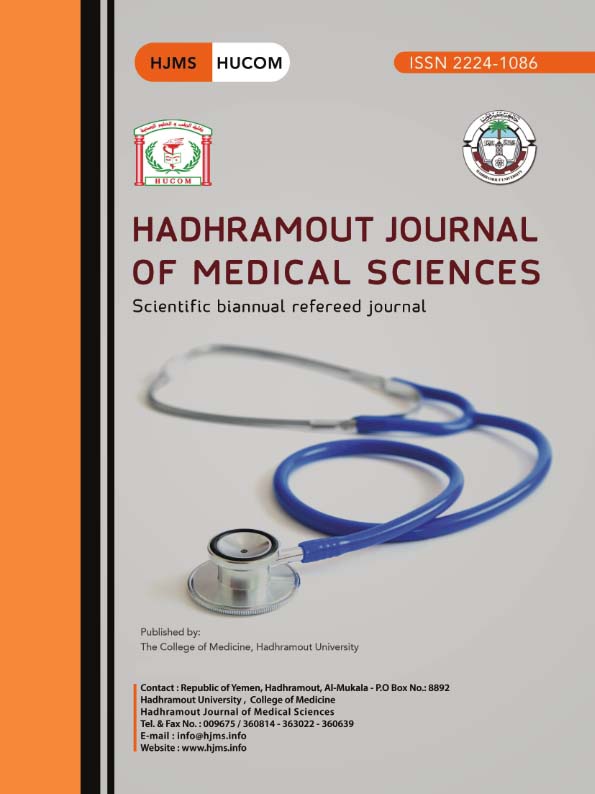Spontaneous Pregnancy After Laproscopic Ovarian Drilling In Infertile patient with Polycystic Ovarian syndrome at university hospital-Mukalla-Yemen
Keywords:
PCOs, LOD, infertilityAbstract
Background: Polycystic ovary syndrome (PCOs) is
the most common reproductive disorder of women in
reproductive age and the major cause of infertility. Laproscopic ovarian drilling (LOD) might improve the
ovulation and pregnancy outcomes.
Objectives: To find out the effects of LOD in infertile
PCOs patients to improvespontaneous pregnancy rate.
Patients and Methods: It is prospective study done
in the period from first January 2014 to 31 December
2014 in Hadramout University hospital for maternity
and childhood in Mukalla city in Yemen. Infertile patients with PCOs underwent laproscopic ovarian drilling
by electrocuatry and followed for 6 months post surgical
procedure.
The independent variables are: age group, duration of
infertility in Year, type of infertility ( primary or secondary ).
Results: A total number of 74 infertile PCOs women
were underwent LOD inHadramoutUniversity hospital
for maternity and childhood. Forty cases (54.1%) were
primary infertile and 34 cases (45.9%) were secondary
infertile. The spontaneous pregnancy after LOD were
achieved in 25 cases of the whole studied cases (33.8%).
The percentage of spontaneous pregnancy in primary infertilityis 35% (14/40). In secondary infertilityit
is 32.35% (11/34),the higher percentage of pregnancy
were in age 31-35 years 7 cases (20.59%). Regarding
duration of infertility the spontaneous pregnancy in
primary infertility was higher in duration 5-7 years 6
cases (15%) and lower in duration of >7 years 3 cases
(7.5% ). In secondary infertility spontaneouspregnancy
was higher in duration 5-7 years 5 cases (14.70%) while
lowest percentage in duration > 7 years 2 cases (5.88%).
Conclusion: LOD in PCOs infertile patients activate
the ovary and increase spontaneous pregnancy rates. Primary infertility had pregnancy rate more than secondary
infertility, and 5-7 years infertile periodwere the more
period responded to LOD and pregnancy achieved.Age
20-25 years in primary infertility had pregnancy rate
more than other age groups. While in secondary infertility age group 31-35 years had the higher pregnancy
rates.

